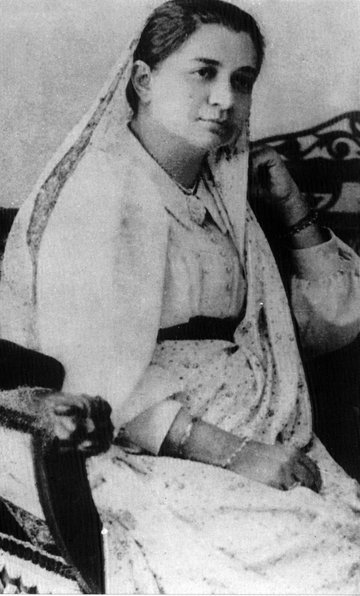
Madame Cama
‐
An important figure in the Indian independence movement, best known for being the first person to display an Indian national flag in a foreign country
Other names
Bhikaiji Rustom Cama
Bhikai Sorab Patel
Place of birth
Date of arrival to Britain
Location(s)
North Kensington, London
W10 6JT
United Kingdom
Place of death
Bombay (Mumbai), India
Date of time spent in Britain
1901–9 (on and off)
About
Madame Cama is known as the 'Mother of Indian Revolution'. She was married to Rustom Cama, a wealthy lawyer based in Bombay. Having worked as a social worker during the Bombay plague epidemic in 1897, she became ill herself and was sent to Britain in 1901/2 for treatment.
Cama met Shyamaji Krishnavarma and became involved in European revolutionary circles. She met Dadabhai Naoroji, a moderate nationalist, and worked for him in his unsuccessful campaign to contest Lambeth North in the 1906 general election. However, Cama identified with more radical politics than Naoroji's, in particular the Indian Home Rule Society and Krishnavarma's India House. In 1907 she attended the International Socialist Congress in Stuttgart. Cama addressed the delegates at Stuttgart and unfolded the Indian tricolour flag (green, yellow and red) with Bande Mataram written on the middle. This was the first time an Indian flag was displayed in a foreign country and was part of the template for the tricolour adopted by the Indian nation.
In 1909 Cama settled in Paris and began publishing a monthly journal called Bande Mataram after the assassination of Curzon Wyllie. Her house became a meeting point for various revolutionaries and exiles (Virendranath Chattopadhyaya, V. D. Savarkar, members of the Ghadar Party) and she met many Indians when they came through Europe (Jawaharlal Nehru, Herabai Tata, Mithan Lam). Cama herself was an exile from India until she renounced seditionist activities. The portrayal of the revolutionary Indian wife Kamala in Alice Sorabji Pennell’s Doorways of the East appears to be based on the life and character of Madame Cama. In November 1935 she returned to Bombay and died nine months later.
Laursen, Ole Birk, '"I have only One Country, it is the World": Madame Cama, Anticolonialism, and Indian-Russian Revolutionary Networks in Paris, 1907–17', History Workshop Journal 90 (2020), pp. 96–114
Mody, Nawaz B. (ed.) The Parsis in Western India: 1818–1920 (Bombay: Allied Publishers, 1998)
Saha, Panchanan, Madame Cama 'Mother of Indian Revolution' (Calcutta: Manisha, 1975)
Sethna, Khorshed Adi, Madame Bhikaiji Rustom Cama (New Delhi: Govt of India, 1987)
Visram, Rozina, Women in India and Pakistan (Cambridge: Cambridge University Press, 1992)
Visram, Rozina, Asians in Britain: 400 Years of History (London: Pluto Press, 2002)
Yajnik, Indulal, Shyamaji Krishnavarma (Bombay: Lakshmi Publications, 1950)
India Office intelligence files, Asian and African Studies Reading Room, British Library, St Pancras
Image credit
Madam Bhikaji Cama
Public domain, via Wikimedia Commons
